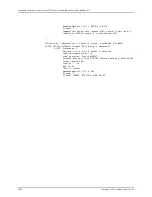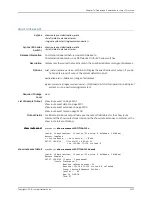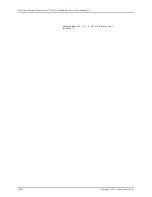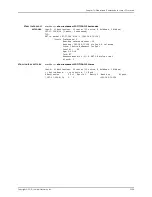
Table 285: show route detail Output Fields
(continued)
Field Description
Field Name
Number of references made to the next hop.
Next-hop reference
count
Indicates that the number of flood next-hop branches exceeded the system limit of 32 branches, and
only a subset of the flood next-hop branches were installed in the kernel.
Flood nexthop
branches exceed
maximum
message
IP address of the route source.
Source
Network layer address of the directly reachable neighboring system.
Next hop
Interface used to reach the next hop. If there is more than one interface available to the next hop, the
name of interface that is actually used is followed by the word
Selected
. This field can also contain
the following information:
•
Weight—Value used to distinguish primary, secondary, and fast reroute backup routes. Weight
information is available when Multiprotocol Label Switching (MPLS) label-switched path (LSP)
link protection, node-link protection, or fast reroute is enabled, or when the standby state is enabled
for secondary paths. A lower weight value is preferred. Among routes with the same weight value,
load balancing is possible.
•
Balance—Balance coefficient indicating how traffic of unequal cost is distributed among next hops
when a routing device is performing unequal-cost load balancing. This information is available
when you enable Border Gateway Protocol (BGP) multipath load balancing.
via
Name of the label-switched path (LSP) used to reach the next hop.
Label-switched-path
lsp-path-name
MPLS label and operation occurring at this routing device. The operation can be
pop
(where a label
is removed from the top of the stack),
push
(where another label is added to the label stack), or
swap
(where a label is replaced by another label).
Label operation
(Local only) Local interface name.
Interface
Network layer address of the remote routing device that advertised the prefix. This address is used
to derive a forwarding next hop.
Protocol next hop
Index designation used to specify the mapping between protocol next hops, tags, kernel export policy,
and the forwarding next hops.
Indirect next hop
State of the route (a route can be in more than one state). See Table 287 on page 2198.
State
AS number of the local routing device.
Local AS
How long the route has been known.
Age
Cost value of the indicated route. For routes within an AS, the cost is determined by IGP and the
individual protocol metrics. For external routes, destinations, or routing domains, the cost is determined
by a preference value.
Metricn
Metric value for BGP path selection to which the IGP cost to the next-hop destination has been added.
MED-plus-IGP
Copyright © 2010, Juniper Networks, Inc.
2194
Complete Software Guide for Junos
®
OS for EX Series Ethernet Switches, Release 10.3
Summary of Contents for JUNOS OS 10.3 - SOFTWARE
Page 325: ...CHAPTER 17 Operational Mode Commands for System Setup 229 Copyright 2010 Juniper Networks Inc ...
Page 1323: ...CHAPTER 56 Operational Mode Commands for Interfaces 1227 Copyright 2010 Juniper Networks Inc ...
Page 2841: ...CHAPTER 86 Operational Commands for 802 1X 2745 Copyright 2010 Juniper Networks Inc ...
Page 3367: ...CHAPTER 113 Operational Mode Commands for CoS 3271 Copyright 2010 Juniper Networks Inc ...
Page 3435: ...CHAPTER 120 Operational Mode Commands for PoE 3339 Copyright 2010 Juniper Networks Inc ...
Page 3529: ...CHAPTER 126 Operational Mode Commands for MPLS 3433 Copyright 2010 Juniper Networks Inc ...
















































